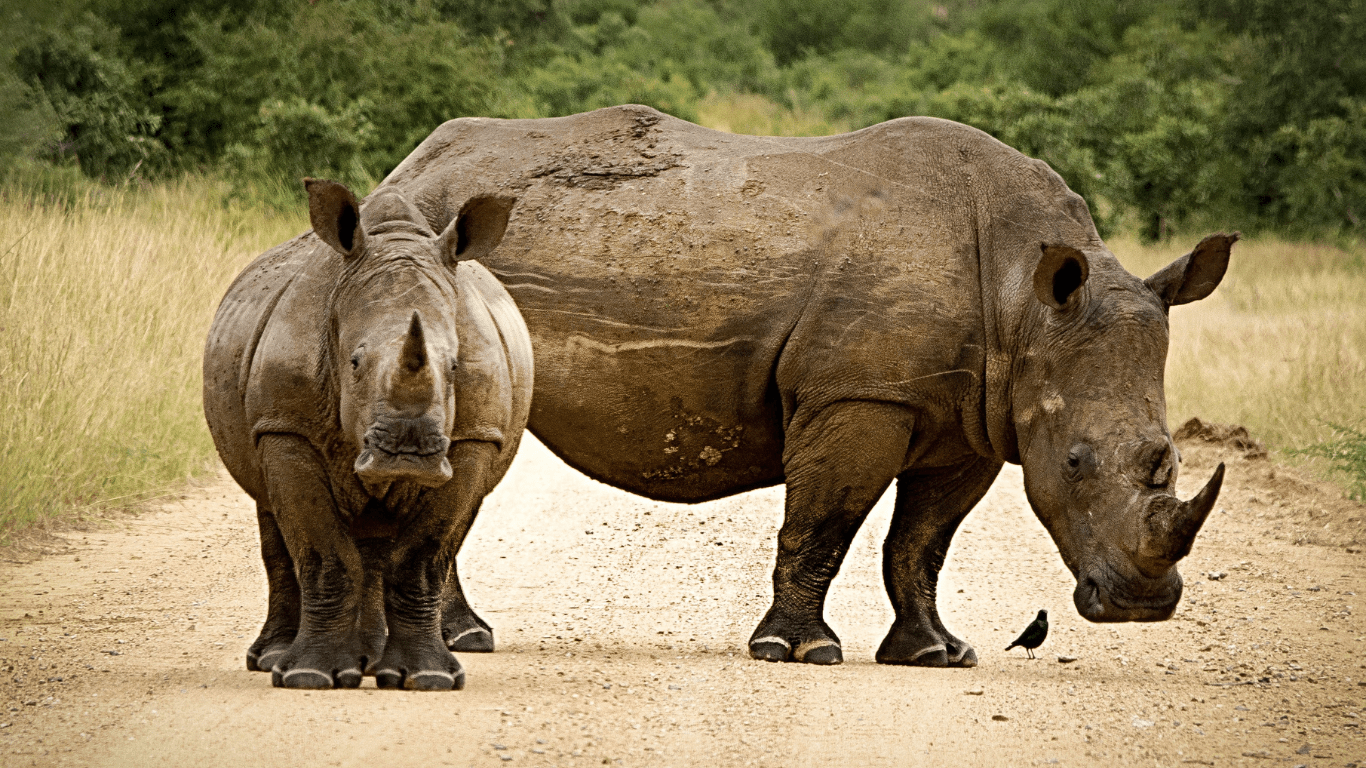Understanding the Current Plight of Endangered Species
The Role of Human Activities
Human activities play a significant role in the endangerment of species across the globe.
From habitat destruction due to deforestation for agriculture or urban development to illegal poaching and trafficking, humans are directly responsible for the decline in animal populations.
Encroaching on wildlife habitats not only leads to habitat loss but also disrupts ecosystems, creating imbalances that threaten the survival of numerous species.
It’s crucial for us to address these human-induced threats to ensure the protection and conservation of endangered species.
The Impact of Climate Change
Climate change poses a growing threat to biodiversity and the survival of endangered species such as:
- rising global temperatures
- extreme weather events
- shifting precipitation patterns
- sea-level rise
are altering habitats and pushing many species towards extinction.
Changes in temperature and weather conditions affect migration patterns, breeding cycles, and food availability, further stressing already vulnerable populations.
Mitigating the impact of climate change through sustainable practices and reducing greenhouse gas emissions is essential to safeguarding endangered species and preserving our planet’s rich diversity.
Historical Approaches to Wildlife Conservation
In the realm of wildlife conservation, it’s crucial to acknowledge the historical approaches that have shaped the current landscape of efforts to protect endangered species.
Looking back at past strategies provides valuable insights into the evolution of conservation practices and the challenges faced over time.
1. Legislation and Protected Areas
I’ll delve into the significance of legislation and the establishment of protected areas in the context of wildlife conservation.
Laws and regulations play a pivotal role in safeguarding endangered species by enforcing prohibitions on hunting, trade, and habitat destruction.
Protected areas, such as national parks and reserves, serve as sanctuaries for wildlife to thrive undisturbed by human activities.
These designated areas are essential for preserving biodiversity and providing habitats for endangered species to recover and flourish.
2. Species-Specific Programs
When focusing on species-specific programs, it’s essential to highlight the tailored initiatives designed to address the unique needs of endangered wildlife.
Conservation efforts targeting specific species take into account their habitat requirements, behavior, and population dynamics to implement targeted conservation strategies.
By focusing on individual species, conservationists can address specific threats and challenges faced by each species, ensuring a more effective and customized approach to wildlife protection.
Advancements in Technology Aiding Conservation
Moving ahead from historical methods, technology plays a pivotal role in enhancing wildlife conservation efforts today.
Let’s delve into two key technological advancements that are revolutionizing the way we protect endangered species.
Conservation Drones and Remote Monitoring
Incorporating drones into conservation practices has significantly transformed the way we monitor and protect wildlife.
These unmanned aerial vehicles offer a bird’s-eye view of vast landscapes, allowing conservationists like me to track endangered species, detect poaching activities, and monitor habitat changes in real time.
By harnessing the power of aerial surveillance, we can cover extensive areas more efficiently and cost-effectively than traditional ground surveys.
Drones equipped with high-resolution cameras and thermal imaging technology provide invaluable data for conservation strategies, enabling us to respond proactively to threats and implement targeted interventions to safeguard endangered species.
Genetic Research and Cloning
Genetic research and cloning are groundbreaking tools in the realm of wildlife conservation, offering promising solutions to combat species decline and genetic erosion.
Through genetic analysis, I can identify unique genetic variations within endangered populations, assess their genetic health, and develop tailored conservation plans to enhance genetic diversity and resilience.
In cases where populations face imminent extinction, cloning technologies can play a crucial role in preserving genetic material and resurrecting species on the brink of disappearance.
By leveraging advancements in genetic research and cloning, we can ensure the survival of endangered species and prevent irreversible biodiversity loss.
By embracing these innovative technologies, we are not just safeguarding individual species but also preserving entire ecosystems for future generations.
Join me in embracing the power of technology to protect our planet’s precious biodiversity.
Community-Based Conservation: Involving Local Populations
Success Stories from Around the World
In my research, I’ve come across inspiring success stories from various regions that highlight the efficacy of community-based conservation initiatives.
For instance, in Kenya’s Maasai Mara, local communities have partnered with conservation organizations to protect wildlife habitats and prevent human-wildlife conflict.
Through sustainable tourism and revenue-sharing models, the Maasai people have not only safeguarded endangered species like lions and elephants but also improved their socio-economic conditions.
This collaborative approach has not only benefited wildlife but also empowered local populations to take ownership of conservation efforts, fostering a sense of stewardship towards their natural heritage.
Challenges and Opportunities
While community-based conservation has shown promising results, there are challenges that need to be addressed to ensure its sustainability and effectiveness.
One significant challenge is the need for long-term engagement and capacity-building within local communities.
Establishing trust, understanding cultural nuances, and aligning conservation goals with community needs are crucial for successful outcomes.
Furthermore, securing funding for community-led projects and ensuring equitable distribution of benefits require strategic planning and resource mobilization.
However, these challenges also present opportunities for partnerships with governments, NGOs, and businesses to support community-based initiatives, fostering local empowerment and environmental stewardship.
By addressing these challenges and seizing opportunities, community-based conservation can play a pivotal role in protecting endangered species and preserving biodiversity for future generations.
Global Collaborations and Treaties
The Convention on Biological Diversity
The Convention on Biological Diversity, or CBD, is a vital international treaty that aims to promote sustainable development while safeguarding global biodiversity.
It provides a comprehensive framework for governments, NGOs, and other stakeholders to address the conservation of biological diversity, the sustainable use of its components, and the fair and equitable sharing of benefits derived from genetic resources.
As nations come together under the CBD, they commit to implementing national strategies for biodiversity and taking concrete actions to protect endangered species and their habitats.
By fostering cooperation and knowledge exchange on conservation practices, the CBD plays a crucial role in global efforts to protect biodiversity and combat species extinction.
Cross-Border Wildlife Corridors
Cross-Border Wildlife Corridors are essential pathways that connect fragmented habitats and enable the safe movement of wildlife across borders.
These corridors play a significant role in promoting genetic diversity, facilitating migration, and mitigating the impact of habitat loss and fragmentation.
By establishing and safeguarding these corridors, countries can enhance the resilience of ecosystems, reduce human-wildlife conflicts, and support the survival of endangered species.
Collaborative initiatives to protect and expand cross-border wildlife corridors are key to ensuring the long-term viability of species and maintaining ecological connectivity on a regional and global scale.
Efforts to secure these corridors through transboundary conservation agreements are crucial for safeguarding biodiversity and preserving critical habitats for future generations.
Economic Incentives for Conservation

Continuing our exploration of wildlife conservation efforts, I’ll delve into the role of economic incentives in safeguarding endangered species.
Two key strategies that have proven effective in promoting conservation efforts are ecotourism and conservation trust funds.
Ecotourism and Its Benefits
Ecotourism, a sustainable travel option that supports the conservation of natural areas, offers a unique opportunity to generate income while promoting wildlife protection.
By engaging visitors in responsible travel practices, ecotourism initiatives create economic value for local communities, encouraging them to preserve wildlife habitats and ecosystems.
This approach not only aids in biodiversity conservation but also raises awareness about the importance of protecting endangered species.
Conservation Trust Funds and Payment for Ecosystem Services
Conservation trust funds play a vital role in financing conservation projects by pooling resources from various stakeholders, including governments, NGOs, and private donors.
These funds provide financial support for activities such as anti-poaching efforts, habitat restoration, and community education, ensuring the long-term sustainability of conservation initiatives.
Moreover, payment for ecosystem services schemes incentivize landowners and communities to safeguard natural resources by compensating them for conserving biodiversity and ecosystem services.
By incorporating economic incentives like ecotourism and conservation trust funds into conservation strategies, we can create sustainable models that benefit both wildlife and local communities, contributing to the preservation of endangered species and their habitats.
Next-Generation Strategies
Re-wilding and Trophic Cascades
Exploring re-wilding strategies is a cutting-edge approach to restoring natural habitats and ecosystems by reintroducing species into their native environments.
By reintroducing keystone species, such as predators or important herbivores, we can trigger trophic cascades, positively impacting the entire ecosystem’s health and biodiversity.
These initiatives not only restore ecological balance but also contribute to mitigating the effects of habitat degradation and fragmentation.
Policy Innovations and Wildlife Crime Enforcement
Innovative policy frameworks play a vital role in combating wildlife crime and enforcing regulations to protect endangered species.
Strengthening laws and implementing stricter penalties for poaching, trafficking, and illegal trade of wildlife are essential steps in safeguarding vulnerable species.
By promoting international cooperation and coordination among law enforcement agencies, we can enhance wildlife protection efforts on a global scale, ensuring a more secure future for our endangered wildlife populations.



